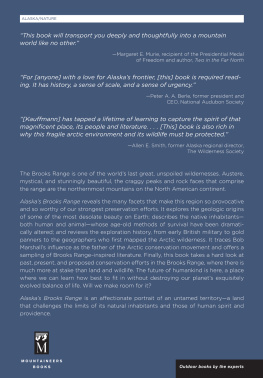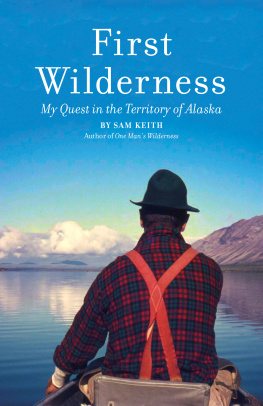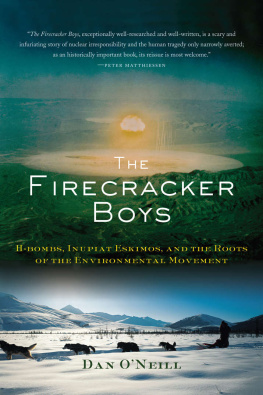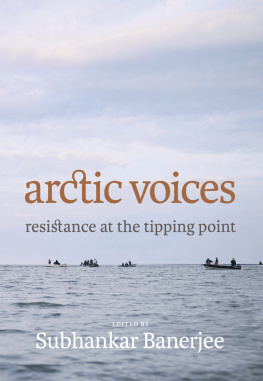THE LAST LIGHT BREAKING
THE LAST LIGHT BREAKING
Living Among Alaskas Inupiat Eskimos
NICK JANS
ALASKA NORTHWEST BOOKS
Anchorage Portland
Copyright 1993 by Nick Jans
All rights reserved. No part of this book may be reproduced or transmitted in any form or by any means, electronic or mechanical, including photocopying, recording, or by any information storage and retrieval system, without written permission from the publisher.
Library of Congress Cataloging-in-Publication Data
Jans, Nick, 1955
The last light breaking : living among Alaskas Inupiat Eskimos/Nick Jans
p. cm.
Includes bibliographical references.
ISBN-10 0-88240-458-X ISBN-13 978-0-88240-458-5 (paper)
1. Kobuk River Region (Alaska)Description and travel.
2. EskimosAlaskaKobuk River Region. I. Title
F912.K6J36 1993 |
979.86dc20 | 93-8041 |
CIP |
Edited by Ellen Harkins Wheat
Cover and book design by Bergh Jensen
Map by Vikki Lieb
Front cover photo: Caribou in the Brooks Range. Photograph by Michio Hoshino, courtesy of Minden Pictures.
ALASKA NORTHWEST BOOKS
An imprint of Graphic Arts Center Publishing Company
P.O. Box 10306, Portland, OR 97296-0306
503-226-2402
www.gacpc.com
Printed in the United States of America by Lightning Source
To the elders, who remember
CONTENTS
PREFACE
As soon as I saw this country, I knew I had to write about it. I remember sitting outside my tent at Walker Lake in 1979, swatting mosquitoes and waiting for the arctic muses to whisper something profound. Uncertain of where to begin or what to say, I stuck to the obviousthe fish wed caught, how strange it was to see the sun at midnight, how massive, stunning, and utterly wild the mountains were, how my friend Peter and I were off on the adventure of a lifetime. Im not sure I bought what I wrote even then, but I knew I had to come up with something.
Over the next five years I hammered out a pile of notebooks filled with purplish prose. After the first (and richly deserved) rejection, I kept my writing to myself, painfully aware that I had nothing original to say about this harsh, magical land; in fact, I was becoming less and less sure of what I felt or believed about anything. Still I watched and listened and jotted stuff down, figuring that someday a switch would click and it all would make sense.
Of course, I was missing the point. In a place where distant peaks sometimes appear inverted above the horizon, where you could walk for hours toward a hill youd guessed was a mile away, where the sun rises at all points of the compass and sometimes casts pale ghosts of itself, nothing would or could ever be certain; in this world the laws of physics seemed to float freely, compressing and expanding, refusing logic. At first these ambiguities gnawed at me, but slowly I learned to let go. The Inupiat had always moved within these eddying currents of time, space, and light; to them, insubstantiality wasnt a question, but a fact of life. Anthropologist Edwin S. Hall writes:
In a land where summer fogs blur the distinction between land and sea, where winter wind and snow can produce the condition known as white-outwhen the land and sky cannot be separated... the concept of an ever-changing, amorphous world is not surprising. The Eskimo world was essentially smooth, without projections or sharp corners. Apparent transformations of various kinds were always occurring, so the change of a man to a wolf was no more unbelievable or inexplicable than the merging of land and sea. If an Eskimo were tricked by lighting conditions into thinking a ground squirrel was a grizzly bear and suddenly discovered he was looking at the smaller animal, the most obvious explanation was that a bear transformed itself, probably through magic, into a ground squirrel.
Having stalked a few squirrel-bears myself, in arranging this collection of essays from different years Ive decided to abandon linear organization in favor of circular rhythms, more thematic than chronological. These writings, like traditional Inupiat narrative, have a tendency to circle back, as the land itself does, through the coming and going of geese, whitefish, and caribou.
Ive anglicized the spellings of some Inupiaq words for the sake of simplicity. The epigraphs are gleaned from many sources; some are purely biographical, others are snatches of folktales, and a few drift in the spaces between.
In Ambler Trading and Arctic Heroes, Ive changed several names to protect identities; otherwise, this book is a work of nonfiction. For every story here, a dozen remain untold, and I still have more questions than answers.
ACKNOWLEDGMENTS
I owe thanks to many people: first and foremost to Jennifer Maier, whose unfailing friendship, literary judgment, and patience over the phone carried me through first drafts and lonely nights; to Lynn and Carol Norstadt, whose door was always open, and whose advice was always good; to John McDermott and Bert Shuster, who listened to me rave; to David Bosworth and Jack Brenner, who taught me something; to Giselle Smith, Grant Sims, and Tobin Morrison, who gave me a chance; to Marlene Blessing and Ellen Wheat, who believed in me; and to Steve Pilz, Mark Pope, and the rest of the Ambler School staff, who put up with me.
To the people of Ambler and Noatak go my deepest thanks, especially to Clarence Wood, who showed me more than I can remember and answered too many questions; to Minnie Gray and Sarah Tickett, who shared their joy in simple things; to Nelson and Edna Griest, who made me feel I belonged. There are many more, both Inupiat and naluaqmiut, I want to thank for being good neighbors and friends over the past fourteen years; I would mention names, but the list would go on for more pages than Im allowed. When I think of you all, I realize how blessed I have been to live among you. Taiku.

THE LAST LIGHT BREAKING
I will walk with leg muscles
which are strong
as the sinews of the shins of the little caribou calf.
I will walk with leg muscles
which are strong
as the sinews of the shins of the little hare.
I will take care not to go towards the dark.
I will go towards the day.
Iglulik Eskimo words to be spoken when setting out on a long journey, The Report of the Fifth Thule Expedition 1921-1924
Getting Here
Alaska? says the gray-haired woman. How exciting! She puts her book aside, ready to talk.
Thirty thousand feet below, Illinois slides past. I lean back and sigh; theres no place to hide, and she reminds me of my favorite aunt. Theres nothing to do but answer her questions and pretend I havent heard them before. As a matter of fact, Ive had the same conversation three times in the past two days. Its part of the ritual when you travel Outside.
Where in Alaska?
Ambler. A little Eskimo village in the upper left-hand corner. Here it comes.
How fascinating! Do Eskimos really live in igloos?
Bingo. Well, iglu is the Inupiaq word for house. Alaskan Eskimos never did live in ice houses, like you see in the movies. Now, about the cold.
How cold is it up there?








